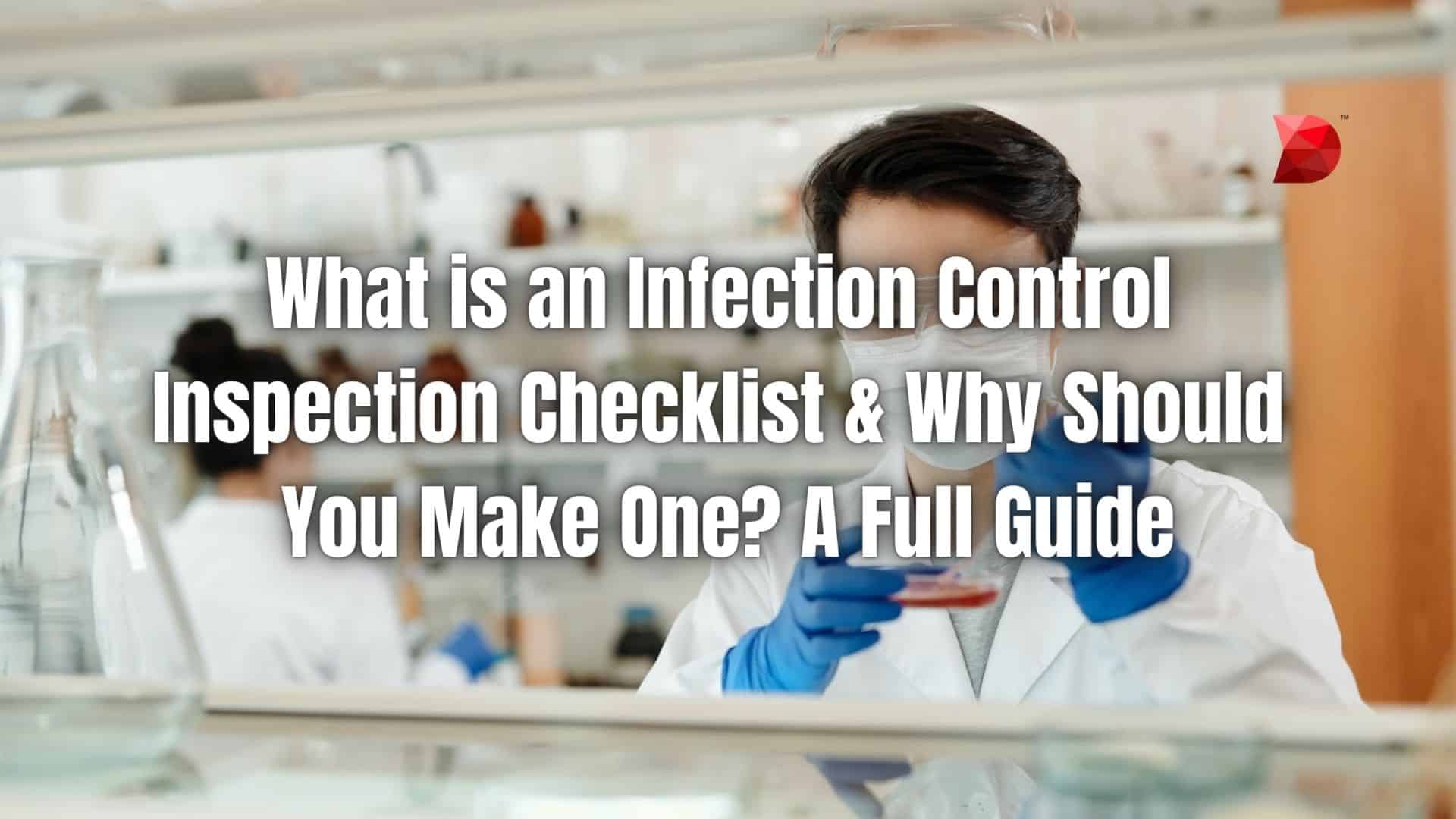Last Updated on December 28, 2022 by Ossian Muscad
Infection control is an essential part of healthcare that helps to protect patients, staff, and visitors from infection. An infection control inspection checklist can be a powerful tool for proactively identifying and mitigating risks to prevent the spread of infection. This guide will provide you with a full understanding of infection control audit checklists, including how to create one and why it’s important.
What is an Infection Control Audit?
An infection control audit is a process of assessing healthcare facilities for infection risks. This involves evaluating the facility’s policies and procedures for infection control, inspecting equipment, assessing staff training and infection prevention practices, interviewing staff members about infection control issues, and looking at infection-related data. The audit checklist provides an organized structure to guide the audit process.
The Importance of Conducting Infection Control Audits
Auditing infection control practices is an important part of infection prevention and helps ensure that infection risks are adequately addressed. The results can be used to identify areas of improvement, create or revise infection control policies, and provide feedback to staff on infection control best practices.
Without a system for regularly auditing infection control, healthcare facilities can become at risk of infection outbreaks. That’s why infection control audits should be conducted regularly, according to infection prevention guidelines. That way, infection risks can be identified and addressed promptly before they become a major issue.
What is an Infection Control Inspection Checklist?
An infection control inspection checklist assesses healthcare facilities for infection risks. It involves evaluating the facility’s infection control policies and procedures, inspecting equipment, assessing staff training and infection prevention practices, interviewing staff members about infection control issues, and looking at infection-related data.
A practical checklist should provide an organized structure to guide the audit process so that areas of improvement can be identified to prevent disease outbreaks. At the same time, it should also be flexible enough to accommodate changes in infection control policies and procedures.
What To Include in an Infection Control Audit Checklist?
Infection control checklists should include regular inspections of the following items:
- Employee name and contact details
- Employee’s general knowledge of infection control
- Sanitary hygiene
- Clean utility
- Patient rooms
- Central supply/storage
- Employee kitchen and breakroom
- Patient kitchen and breakroom
- Medication room
- General unit
- Nurse station
- Isolation rooms
- Patient shower room
- Dirty utility room
- Laboratory
- Pharmacy
- Morgue and autopsy suite
- Procedure rooms
- Radiology/imaging room
- Surgery
- Physical therapy
Each of these areas should be evaluated for infection risks, potential exposure sources, and infection control best practices. Additionally, infection control audit checklists should include questions related to infection control policies, infection prevention practices, and staff training.
How To Create an Infection Control Audit Checklist
Creating an infection control audit checklist can be a daunting task. However, it’s essential to ensure that the checklist is comprehensive and well organized to accurately assess infection risks.
- The first step is determining what areas need to be inspected and evaluated.
- Infection control checklists should include regular inspections of employees, sanitary hygiene, clean utility, patient rooms, central supply/storage, and other areas in the healthcare facility.
- Once the areas to be inspected have been determined, the next step is to create a set of questions for each area.
- Check and ensure that the questions are related to infection control policies, infection prevention practices, and staff training.
- The infection control audit checklist should be tested and revised as needed.
- Finally, the infection control inspection checklist should be shared with staff members so that they know what to expect and how they can help improve infection control measures in the healthcare facility.
Create Infection Control Checklists with DATAMYTE
Infection control checklists ensure that healthcare facilities meet infection prevention standards. DATAMYTE’s low-code capabilities will let you create a comprehensive and well-organized infection control audit checklist. Its Digital Clipboard, in particular, is a low-code software capable of creating effective infection control checklists.
With low-code features such as a drag-and-drop interface and custom data fields, users can easily create infection control checklists that ensure the highest level of infection prevention standards. In addition, DATAMYTE’s Digital Clipboard also provides infection control professionals with real-time updates on infection risks and prevention practices.
You can even use the DataMyte Digital Clipboard to conduct layered process audits for your entire medical facility. An LPA is an advanced auditing method that lets you assess every aspect of your infection control program, from infection risks to infection prevention practices.
With its easy low-code features, you use the DataMyte Digital Clipboard to create comprehensive infection control audit checklists that will help you meet infection prevention standards and keep your patients safe.
The DataMyte Digital Clipboard is a complete solution to your infection control audit needs. Whether you are conducting infection risk assessments, infection prevention audits, or layered process audits for your entire healthcare facility; the DataMyte Digital Clipboard will ensure you are prepared to take infection control measures. Book a demo with our team to learn more about DATAMYTE and its features.
Conclusion
Following infection control, an audit checklist is essential for any healthcare facility. It helps to proactively capture and immediately report health risks to control the spread of infectious diseases, create or revise infection control policies, and ensure that infection prevention practices are followed.



